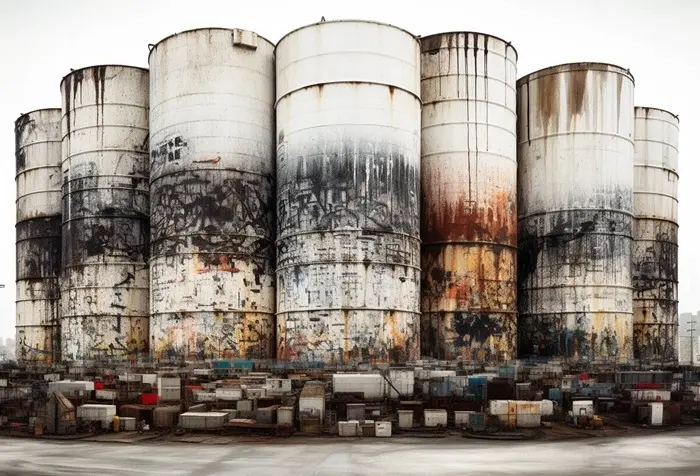Crude oil is a vital energy source, powering industries, transportation, and households worldwide. Its transportation, however, poses significant risks. From environmental hazards to geopolitical tensions, the journey of crude oil from extraction sites to refineries involves multiple challenges. This article explores the seven primary risks associated with crude oil transportation, highlighting the complexities and potential dangers inherent in this critical process.
1. Environmental Risks
Oil Spills
One of the most significant environmental risks in crude oil transportation is oil spills. These occur during maritime transport, pipeline leaks, or accidents involving tanker trucks. Oil spills can have catastrophic effects on marine life, coastal ecosystems, and local communities. The Deepwater Horizon spill in 2010, for example, released millions of barrels of oil into the Gulf of Mexico, causing extensive environmental damage.
Pipeline Leaks
Pipelines are a common method for transporting crude oil overland. However, pipeline leaks can result in significant environmental contamination. Leaks may occur due to corrosion, mechanical failures, or natural disasters. The 2016 North Dakota pipeline spill released over 176,000 gallons of crude oil, contaminating soil and water sources.
See Also: How To Extract Kerosene From Crude Oil?
2. Geopolitical Risks
Political Instability
Crude oil transportation often traverses regions with varying degrees of political stability. Political unrest, conflicts, and terrorism can disrupt supply chains. For instance, the Strait of Hormuz, a crucial chokepoint for global oil shipments, has been a focal point for geopolitical tensions. Any conflict in this region can impede the flow of oil, affecting global markets.
Regulatory Changes
Governments frequently update regulations affecting crude oil transportation. Changes in safety standards, environmental policies, or trade tariffs can impact the efficiency and cost of transporting oil. Companies must remain adaptable and compliant with international and local regulations to avoid disruptions.
3. Safety Risks
Accidents and Collisions
Transportation of crude oil involves significant safety risks, particularly accidents and collisions. Tanker trucks on highways, ships navigating busy ports, and pipelines running through populated areas all present potential hazards. Accidents can lead to explosions, fires, and oil spills, posing severe risks to human life and property.
Handling and Storage
Improper handling and storage of crude oil can lead to accidents. Ensuring that personnel are adequately trained and that facilities meet stringent safety standards is crucial. The risk of fire and explosion during loading and unloading operations necessitates strict adherence to safety protocols.
4. Economic Risks
Market Volatility
Crude oil prices are highly volatile, influenced by geopolitical events, supply-demand dynamics, and economic conditions. Market volatility can affect the profitability and viability of crude oil transportation projects. Companies must manage financial risks by hedging against price fluctuations and diversifying their operations.
Cost of Transportation
The cost of transporting crude oil varies based on the mode of transport, distance, and regional factors. High transportation costs can erode profit margins. Companies must optimize their logistics to ensure cost-effective and efficient delivery of crude oil to refineries and markets.
5. Technical Risks
Infrastructure Integrity
The infrastructure used in crude oil transportation, including pipelines, tankers, and storage facilities, must be meticulously maintained. Aging infrastructure, lack of maintenance, and technical failures can result in leaks, spills, and accidents. Continuous monitoring and investment in infrastructure upgrades are essential to mitigate these risks.
Technological Failures
Advances in technology have improved the safety and efficiency of crude oil transportation. However, technological failures, such as malfunctioning sensors, communication breakdowns, or cyber-attacks, can disrupt operations. Ensuring robust cybersecurity measures and regular equipment maintenance is vital.
6. Weather-Related Risks
Extreme Weather Events
Extreme weather events, such as hurricanes, storms, and floods, can significantly impact crude oil transportation. These events can damage infrastructure, disrupt supply chains, and cause accidents. The 2005 Hurricane Katrina, for example, damaged offshore oil rigs and pipelines in the Gulf of Mexico, leading to substantial production losses.
Climate Change
Climate change poses long-term risks to crude oil transportation. Rising sea levels, increased frequency of extreme weather events, and shifting climate patterns can affect transportation routes and infrastructure. Companies must consider climate resilience in their planning and investment strategies.
7. Social and Community Risks
Community Opposition
Communities along transportation routes often oppose crude oil projects due to environmental and safety concerns. Protests, legal challenges, and advocacy campaigns can delay or halt transportation projects. Engaging with local communities and addressing their concerns through transparent communication and responsible practices is crucial.
Human Health Risks
Exposure to crude oil and its by-products can pose health risks to workers and local populations. Ensuring strict safety protocols, proper protective equipment, and regular health monitoring can mitigate these risks. Additionally, companies must address potential health impacts on communities living near transportation routes.
Conclusion
Crude oil transportation is a complex process fraught with multiple risks. Environmental hazards, geopolitical tensions, safety concerns, economic challenges, technical issues, weather-related threats, and social opposition all contribute to the intricate landscape of crude oil logistics. Addressing these risks requires comprehensive strategies, investment in technology and infrastructure, and a commitment to safety and environmental stewardship. By understanding and mitigating these risks, the crude oil industry can continue to supply the world’s energy needs while minimizing its impact on the planet and its inhabitants.
Related topics:






























